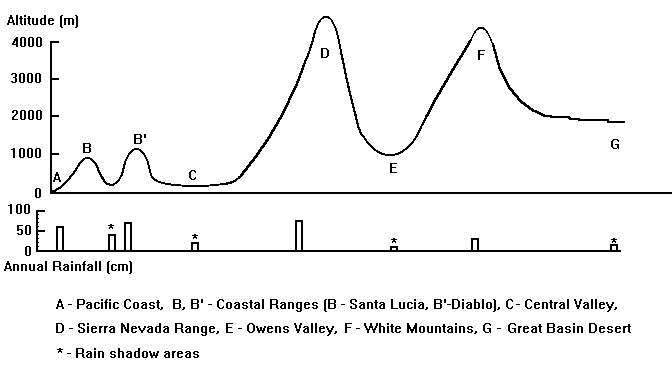
Three remarkable trees live on a small part of our planet, in western United States and mainly in the state of California. They live in environments very distinct from each other, and studying these plants gives us an opportunity to discuss how climate is affected by mountians, hand how each particualr tree is adapted to its special enviroment.
How land features affect climate
The moist prevailing winds from the Pacific ocean blow inland from the west coast, especially during cooler months. When the wind is diverted by mountains it loses some of its moisture because the air mass is lifted, the air cools, and moisture condenses. The wind that drops down on the leeward side of the mountains is much drier than before. If we make a transect from the California coast we see that the wind passes over four such parallel ranges (see diagram below). Each of these mountain ranges extracts moisture so that the air mass reaching the Nevada desert is extremely dry. This, of course, is the well-known rain-shadow effect, and this field trip will give you an excellent example of the phenomenon.

The slides found within these pages are the property of David W. Lee, (copyright 1979) Florida International University. To use the images shown elsewhere you must contact him for permission (clicking on his name will open an email connection). This educational slide show is presented compliments of David Lee, and Illinois State University's Fell Aboretum and the Department of Biological Sciences.